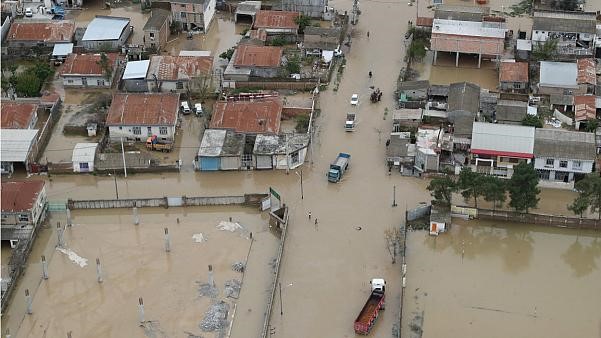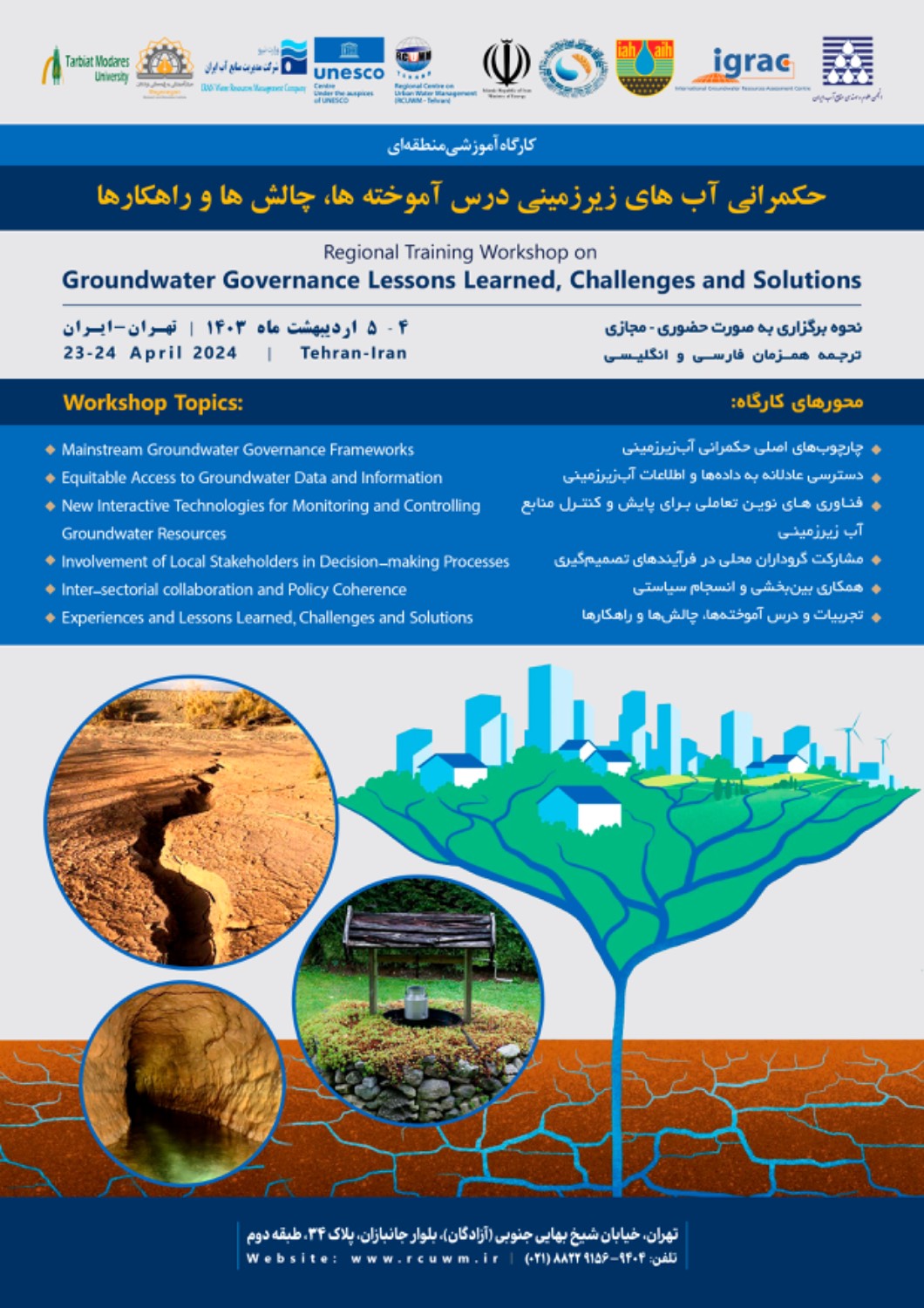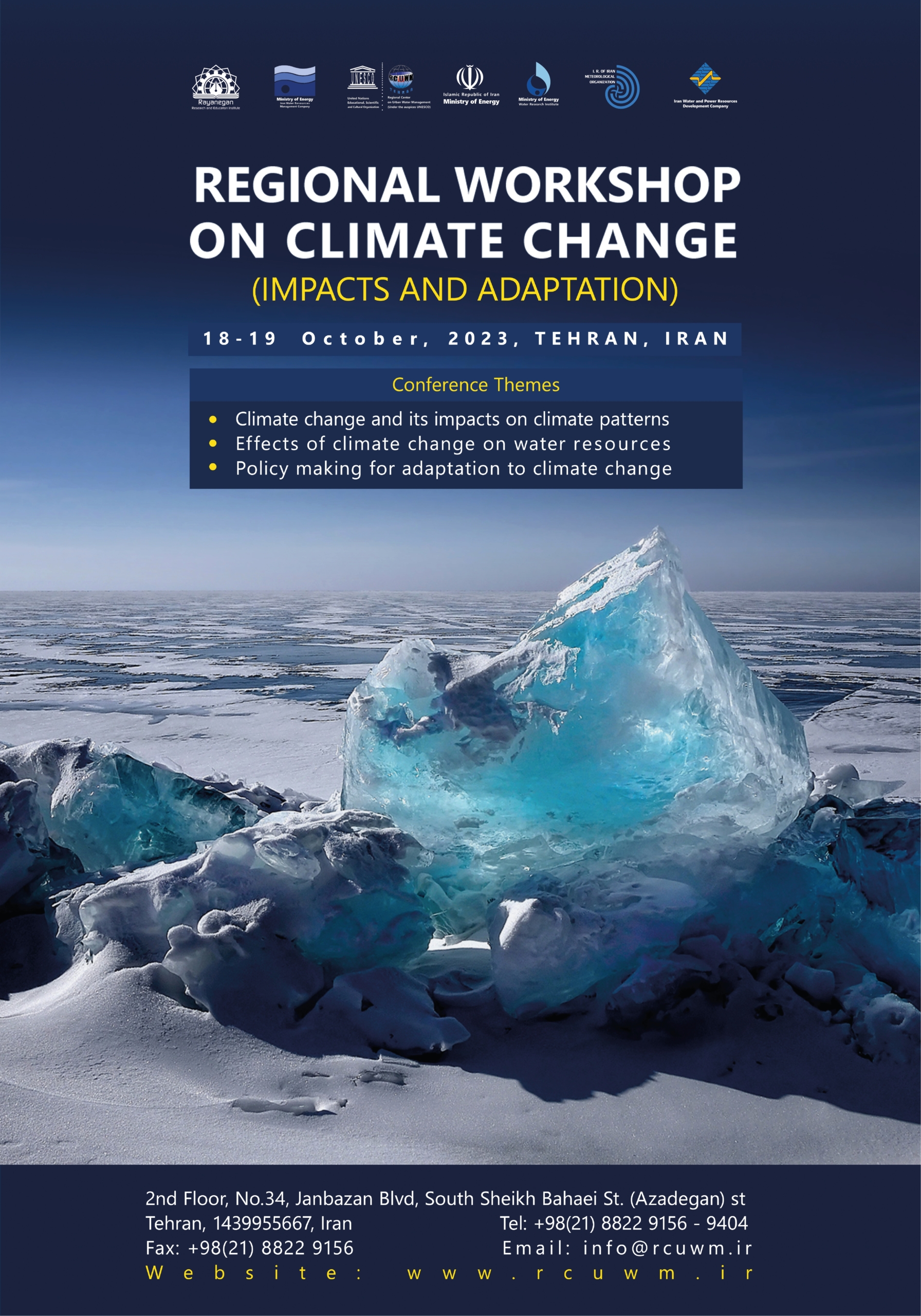Recent floods in Iran, especially in Khuzestan province and the western watershed, have been a heavy and damaging experience for Iran. Considering the importance of learning lessons and gaining experience, satellite imagery and flood alert system reports of the European Union, presented here. A report of four weeks of floods using maps was translated and edited by the UNESCO Center for Urban Water Management for Persian people.
The most important flood events/news during the four weeks of flood in March-April 2019 were:
Week 1.
- Heavy rainfall has been affecting northern and southern Iran, most of Iraq, as well as eastern Turkey over the past 10-days, triggering flash floods that have resulted in casualties.
- In Iran, 19 people were reported dead, and approximately 100 injured, while hundreds of buildings have been damaged across Fars Province (in particular in the Shiraz city area). In addition, 56 000 people were affected across Golestan and Mazandaran the Province.
- In Iraq, heavy rain caused floods, swamping rural areas of the provinces of Wasit, Babil, Basra, and Nineveh. One person was reported 56 000 dead in Wasit Province.
Week 2.
- As of 30 March, 45 persons have been reported dead and 55 villages have been reportedly evacuated.
- A state of emergency has been declared in the southwestern Iranian province of Khuzestan.
- Heavy rain and floods continue to affect the country, especially in the provinces of Khuzestan, Chaharmahal and Bakhtiari, Fars, Golestan, Kermanshah, North Khorasan, Kohgiluyeh and Boyer-Ahmad, Markazi, Sistan and Baluchestan, Lorestan, Hamadan, Mazandaran, Semnan.
Week 3.
- According to Iranian authorities, 70 people are reported dead.
- In Khuzestan, 6 cities and 100 villages have been evacuated while 161 are without water. In Lorestan, 205 villages are with power outages, 95 without water, 80 schools have been destroyed and 10 villages have been evacuated. In Golestan, 62 359 persons have been affected and 15 368 are displaced.
- The Karkheh Dam, which is at near capacity, was opened to discharge excessive water build-up in an effort to prevent catastrophic failure.
- The European Commission has funded EUR 1.2 Million to help the affected provinces.
Week 4.
- On 8 April the European Civil Protection Mechanism (EUCPM) was activated following a request for assistance from the Iranian authorities. The European Commission has provided humanitarian funding of EUR 1.2 million to assist the response.
- Austria, Czech Republic, France, Italy, and Slovakia have made offers through the EUCPM: Generators, jerry cans, sludge/mud pumps, water pumps, water tanks, plastic rolls, (family) tents, blankets, sleeping bags, mattresses, solar lamps, boots, wooden pallets, hygiene kits, kitchen sets, emergency kits, thermos, (inflatable) boats, medical items.
- The in-kind assistance will be delivered to the Iranian Red Crescent Society.





